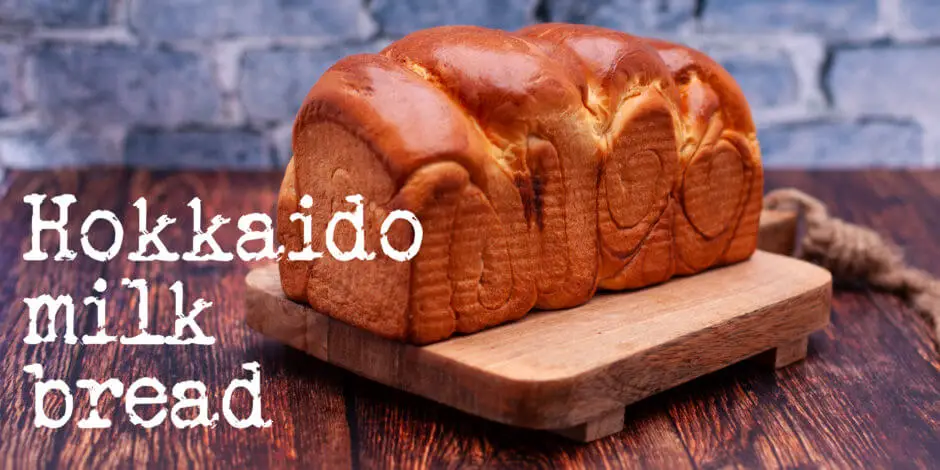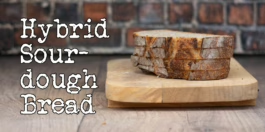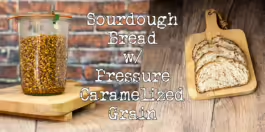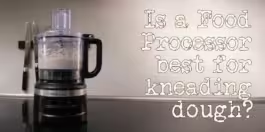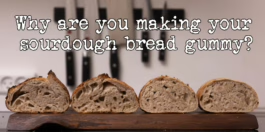When you hear the word Hokkaido milk bread, most people would think of bread made with Hokkaido pumpkin. It isn’t, though. It is the softest, most fluffy bread made with wheat flour you will ever try. It’s not brioche bread because there is no butter in the recipe. So to enrich the dough, we add egg and whipping cream. That will help with flavor and retain the moisture in the bread. This is my recipe for Hokkaido milk bread.
This bread is known by many names: Japanese milk bread, Asian milk bread, Shokupan, Pai Bao, and Tangzhong milk bread. Whatever the name, this is the best and most fluffy bread you will ever make.
This bread is named after the Hokkaido island in Japan, which is why it is called Hokkaido Milk Bread.
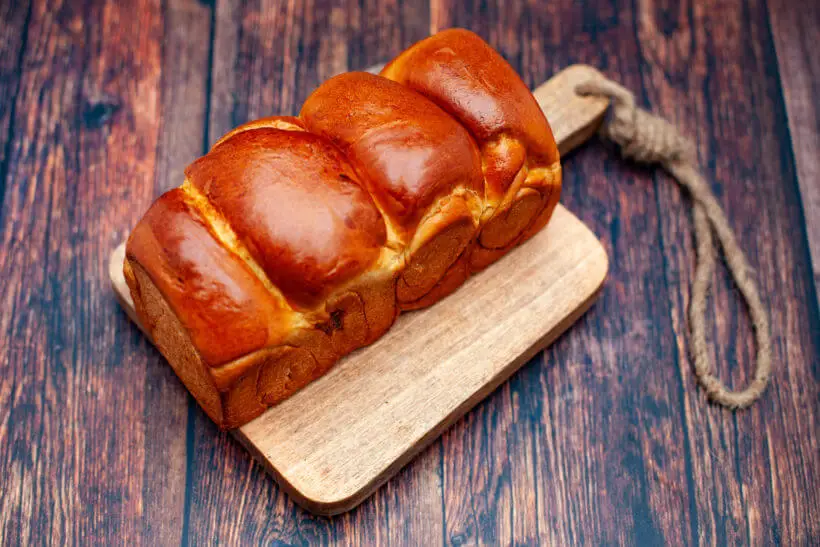
A different pre-ferment in this Hokkaido milk bread recipe
The last name listed is probably the most important because that explains how the bread is made. It is made using a roux called Tangzhong, made from milk and flour. Essentially a custard without flavor.
It binds to part of the fluid in the starch molecules of the flour. That means the bread will stay soft and moist much longer than homebaked bread usually does.
On top of that, part of the fluid is trapped in the dough. So even though this is a high-hydration dough, it is not very hard to work with.
You make Tangzhong by warming the milk and flour mixture in a pot. When it hits 65°C/149°F, the starch molecules gelatinize, which is exactly what we want to happen.
The formula in this Hokkaido milk bread recipe
Vitals
| Total weight | 593 grams |
| Pre-fermented flour | 6.7% |
| Hydration | 58.1% |
| Yield | 1 bread |
The dough
The pre-ferment is not a classic pre-ferment where you ferment part of the flour with either sourdough starter or yeast. It is actually a type of custard. The hydration is very high because the idea here is to suck as much moisture into the flour as possible.
| Weight | Ingredient | Baker's Percentage |
|---|---|---|
| 100g | milk | 500.0% |
| 20g | bread flour | 100.0% |
The doughs formula is the remaining part of the flour, the milk powder, salt, sugar, egg, and the remaining fluids in these proportions:
| Weight | Ingredient | Baker's Percentage |
|---|---|---|
| 280g | Bread Flour | 93.3% |
| 7g | Active Dry Yeast | 2.3% |
| 15g | Skim Milk Powder | 5.0% |
| 6g | salt | 2.0% |
| 40g | Sugar | 13.3% |
| 25g | Egg | 8.3% |
| 25g | Milk | 8.3% |
| 75g | Whipping Cream | 25.0% |
If you feel like it, you can play with the bread formula here in my bread calculator.
Conclusion
I love sourdough bread. Fermented bread with lots of whole grains and taste, but then you meet a bread like this. A fantastic bread. No less.
A wonderfully browned soft crust. The most fluffy crumb I’ve ever seen. It’s just pure genius with some delicious butter on top. When it finally gets a bit dry, it’s also awesome in the toaster.
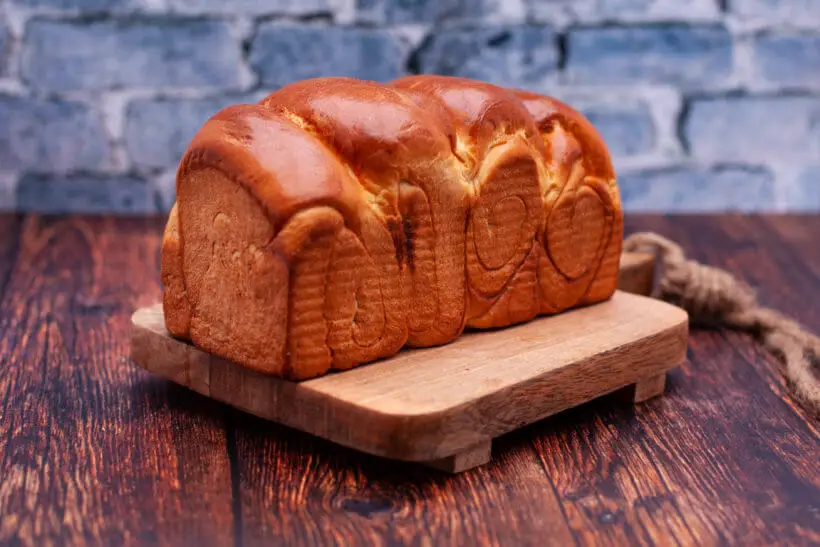
It seems this bread is the perfect match for french toast or grilled cheese.
I couldn’t help myself. This bread screams bread p@rn:
Please share on social media
This is my recipe for Hokkaido milk bread. I hope you want to try it. If you make this recipe and post it on Instagram, please tag me as @foodgeek.dk so I can see it. That would make me very happy.
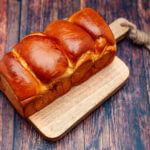
Hokkaido milk bread
Ingredients
Tangzhong
- 20 grams bread flour
- 100 grams milk
Dough
- 280 grams bread flour
- 7 gram instant yeast a sachet
- 15 grams skim milk powder
- 40 grams sugar
- 6 grams fine salt
- 25 grams egg
- 100 grams whipping cream
Instructions
Make tangzhong
- Put 20 grams of bread flour and 100 grams of milk in a pot and mix it thoroughly.
- Put the pot on the stove and turn it on to middle-low heat. Heat while whisking until you have a thick and uniform mass resembling a custard.
- Cool the tangzhong down. You can use it when it's lukewarm, but it will kill off the yeast if it is too warm.
Mix and knead the dough
- Mix bread flour, yeast, skim milk powder, salt, and sugar in the bowl of your mixer.
- Crack the egg into a bowl and mix it lightly with a fork.
- Make a hole in the middle of the flour, and pour 25 grams of egg and 120 grams of tangzhong into the hole. Reserve the remaining egg for egg wash later.
- Add 100 grams of whipping cream.
- Attach the bowl to the mixer and mix the dough with the paddle on low speed until everything is incorporated.
- Switch to the dough hook and knead the dough until it passes the windowpane test. If the dough is too wet and won't clear the bottom of the bowl, add a bit more flour.
- I kneaded for about 20 minutes before my dough passed the windowpane test.
First proof
- Brush a bowl with a bit of oil. Shape the dough into a ball and put it in the bowl. Flop it around until the ball is covered in oil.
- Cover the bowl and let the dough rise somewhere warm until it has doubled in size.
Final proof
- Butter a bread pan.
- Divide the dough into four equally sized pieces. I weighed the dough, but I am weird like that.
- Take a piece of dough and make it into a quick ball. Press it flat with your hand.
- Roll the dough to an approximate rectangle about five mm/⅕ inches thick.
- Roll the dough into a taut roll.
- Press the dough flat and roll it out again. It will become very long and should be about the same width as your bread pan.
- Roll the dough from the short edge and put it into the pan.
- Continue with the remaining three dough pieces and put them all in the pan. They should about fill the bottom.
- Cover the pan and let the dough rise to double size.
- When the dough has doubled, heat the oven to 170°C/340°F.
Baking
- Mix the remaining egg for earlier with a splash of milk.
- Brush it carefully onto the risen dough.
- Bake the bread for 30-35 minutes until it is done. About halfway through the baking, turn the bread the other way around to promote even baking.
- Take it out of the oven and remove it from the pan. Let cool for a minimum of 30 minutes on a wire rack.



